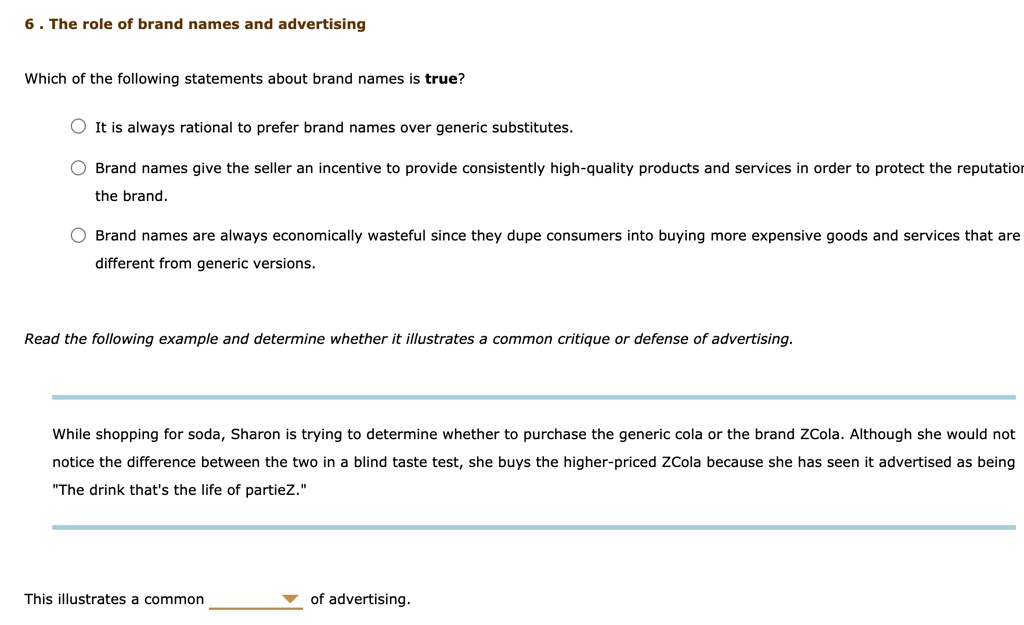Which Of The Statements Is True Regarding Advertising

In an era saturated with marketing messages, discerning truth from fiction in advertising has become a crucial skill for consumers and regulators alike. The sheer volume of advertisements, coupled with increasingly sophisticated persuasive techniques, necessitates a closer examination of the statements companies make to promote their products and services. But which claims hold water, and which are designed to mislead?
This article delves into the complex world of advertising claims, exploring how to identify accurate information amidst a sea of potential exaggeration and deception. It examines the roles of regulatory bodies, the types of claims companies make, and the responsibility consumers have in navigating the advertising landscape. Understanding these nuances is vital for making informed purchasing decisions and holding businesses accountable for their messaging.
The Regulatory Landscape
Several organizations play a crucial role in overseeing advertising practices and ensuring accuracy. In the United States, the Federal Trade Commission (FTC) is the primary agency responsible for preventing deceptive and unfair business practices, including false advertising. The FTC has the authority to investigate companies, issue cease and desist orders, and even impose financial penalties for violations.
The National Advertising Division (NAD) of the Better Business Bureau (BBB) also serves as an important self-regulatory body. The NAD reviews advertising claims and encourages companies to modify or discontinue deceptive ads. While its decisions are not legally binding, most advertisers voluntarily comply with NAD recommendations.
Outside the US, similar regulatory bodies exist, such as the Advertising Standards Authority (ASA) in the United Kingdom. These organizations work to maintain ethical standards in advertising and protect consumers from misleading information.
Types of Advertising Claims
Advertising claims can be broadly categorized into several types, each with its own level of scrutiny. Factual claims make specific statements about a product's features, performance, or benefits. These claims must be substantiated with reliable evidence.
Puffery involves exaggerated or subjective statements that are not meant to be taken literally. Examples include phrases like "the best coffee in the world" or "the ultimate driving machine." Puffery is generally legal as long as it doesn't mislead consumers into believing specific, verifiable facts.
Comparative advertising directly or indirectly compares a product to a competitor's product. While legal, comparative claims must be truthful and substantiated to avoid misleading consumers about the relative merits of the products.
What Makes a Statement True (or False)?
Determining the truthfulness of an advertising statement hinges on several factors. The FTC requires advertisers to have a "reasonable basis" for all express and implied claims. This means having competent and reliable scientific evidence to support any claims that a product can perform as advertised.
For factual claims, evidence must be objective and verifiable. Studies, tests, and expert opinions can be used to support claims about a product's efficacy, safety, or ingredients. However, the evidence must be relevant to the specific claim being made and conducted using sound methodologies.
Implied claims, which are suggestions or inferences that consumers might draw from an advertisement, are also subject to scrutiny. Even if a claim is not explicitly stated, the FTC can take action if the overall impression created by the advertisement is deceptive.
The Consumer's Role
While regulatory bodies play a vital role in policing advertising, consumers also have a responsibility to be informed and skeptical. Critical thinking is essential when evaluating advertising claims. Consumers should question exaggerated claims, seek out independent reviews, and compare products and prices before making a purchase.
Looking for independent sources of information, such as consumer reports or expert reviews, can help consumers assess the validity of advertising claims. Reading product labels and understanding the ingredients or features being advertised is also crucial.
Consumers can also report suspected false advertising to the FTC or NAD. These reports can trigger investigations and help hold companies accountable for their misleading practices. Collective action can lead to significant changes in advertising standards and protect other consumers from deception.
The Impact of Misleading Advertising
False or misleading advertising can have significant consequences for consumers and the economy. It can lead to financial losses, health risks, and a general erosion of trust in businesses. The consequences of deceptive advertising extends beyond mere financial loss.
From harmful diet supplements falsely promising weight loss to deceptive investment schemes that rob people of their savings, the impact of false advertising can be devastating. A study by the National Consumers League found that deceptive advertising costs consumers billions of dollars each year.
By understanding the regulatory landscape, the types of claims companies make, and the importance of critical thinking, consumers can protect themselves from deceptive advertising and make informed purchasing decisions. Ultimately, the responsibility for ensuring truth in advertising lies with both businesses and consumers.




